Installation instructions with Mapei products
These installation instructions apply to all rabbet-edged Tulppa panels that are at least 20 mm thick.
COMPONENTS OF THE MAPEI SYSTEM:
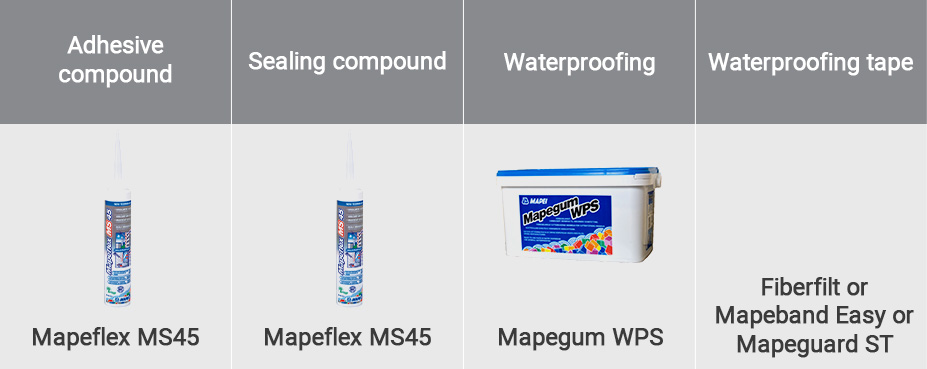
Mapei products:
• Adhesive/Sealing compound: Mapeflex MS45
• Waterproofing: Mapegum WPS
• Waterproofing tape: Fiberfilt or Mapeband Easy or Mapeguard ST
• Pipe cuff: Mapeguard PC
• Adhesive mortar: Keraflex Maxi S1 or Ultralite S1
• Sealing grout: Keracolor FF or Ultracolor Plus
• Sanitary silicone: Mapesil AC or Mapesil LM


Finnfoam Oy products:
• Tulppa Z brackets
• Tulppa O brackets
• Tulppa spacers
(If used for a bathroom made of sheet metal elements)
Attachment to a timber or metal frame
Preparation of the installation surface or frame
The rabbet-edged Tulppa panels are designed to be installed horizontally with an on-centre stud spacing of 600 mm. The innovative and patented joint solution and horizontal installation system of Tulppa panels make them significantly quicker and easier to install. The concealed attachment at the edges using Tulppa Z brackets, the rabbeted solution and using an adhesive compound as a seal ensure safe and waterproof joints on the first go.
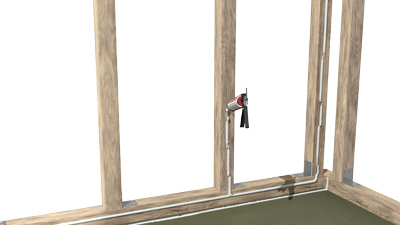
For fittings and bathroom furnishings, mounting planks are installed onto the framework (support strips or plywood). Lightweight fixtures, such as towel hooks and toilet paper holders, may be attached onto the surface of the tiling using the Mapeflex MS45 adhesive compound. Installation wedges are used to prop the Tulppa panels 2–3 mm off the floor. It is advisable to gather enough installation wedges before you begin the installation.
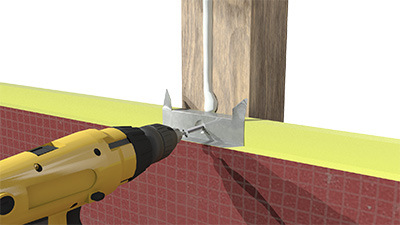
Attachment to a base
The actual installation begins with the application of a 1–2 mm wide string-like line of the Mapeflex MS45 adhesive compound onto each frame beam behind the panel, including the support strips. The lowest Tulppa panel on the wall is placed on top of the installation wedges and pressed into the frame.
During installation, ensure that the back side of the panel placed against the studding is higher than the front side, i.e., that the rabbeting is placed facing the right way. It is not necessary to saw off the rabbeting on the long side of the Tulppa panel left resting against the floor. When the rabbeting is left intact, it leaves enough space for the sealing compound applied to the joint.
The panels are attached to the framework of the wall from the rabbeted edge using Tulppa Z brackets and countersunk screws. Use at least 5 Z brackets per panel (spacing 600 mm). Each panel should be attached to each frame stud, so the spacing of the studs affects the number of brackets used. The length of the screw must be at least twice the thickness of the attached panel. With a metal frame, it is easier to use self-tapping (self-drilling) screws. The Tulppa panels are also attached to the framework of the wall approximately 25 mm above floor level with Tulppa O brackets spaced approximately 600 mm apart. First, Mapeflex MS45 adhesive compound is applied to the back of the O bracket or the surface of the Tulppa panel (at the attachment point of the Tulppa O bracket), after which the Tulppa O bracket is screwed into place. Finally, excess adhesive compound is smoothed over the surface of the panel with a trowel. Before laying the next layer of panels, Mapeflex MS45 adhesive compound is applied to the joints.
Panel seams and corner joints
At the corners, a gap of 1–3 mm is left between the panels to be filled in with Mapeflex MS45 adhesive compound. The gap must be filled in thoroughly up to the surface of the panel. The panels are pressed firmly together, and any excess adhesive paste is smoothed over the joint with a trowel.
Once the adhesive compound is surface dry, the corners and the intersection of the floor and the wall are sealed using Mapegum WPS waterproofing and Fiberfilt sealing tape. Ensure that no air pockets are left under the sealing tape pressed on top of the fresh layer of waterproofing. It is not necessary to separately waterproof the horizontal seams. Any possible vertical seams are waterproofed in the same manner as the corners, but with this system it is not necessary to waterproof the horizontal seams between the panels.
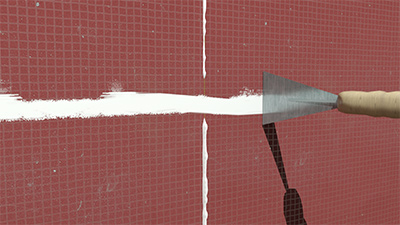
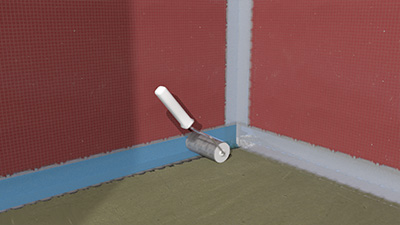
Wall and floor joint
The concrete floor of a wet room is waterproofed according to the instructions of the Mapegum WPS waterproofing system. The gap between the Tulppa panel and the floor is filled in with Mapeflex MS45 adhesive compound and any excess compound is smoothed over the surface of the panel (please note that the waterproofing membrane brought up from the floor must reach 30–50 mm up the surface of a clean Tulppa panel).
The waterproofing membrane applied to the floor is brought at least 100 mm up the wall, which means that it will also cover the Tulppa O brackets used near the floor level. Fiberfilt sealing tape is pressed onto a fresh coat of Mapegum WPS so that no air pockets are left between the tape and the surface below. Finally, the Fiberfilt sealing tape is covered completely with Mapegum WPS waterproofing.
Passages
When the panels are being attached, the gaps between passages and Tulppa panels are sealed with the Mapeflex MS45 adhesive compound. Once the adhesive compound has dried, pipe inlets are sealed with Mapegum WPS waterproofing and Mapeguard PC pipe cuffs. While sealing, you must ensure that no dried-up excess installation adhesive is left between the pipe cuff and the pipe.
Mapegum WPS waterproofing is spread around the pipe to cover the area onto which the Mapeguard PC pipe cuff is placed. The pipe cuff is laid on top of a fresh coat of Mapegum WPS waterproofing and carefully rubbed smooth to push out any air from under the cuff. Finally, Mapegum WPS waterproofing is used to completely cover the pipe cuff, which must also extend over the collar onto the surface of the Tulppa panel. For pipe cuffs exceeding 75 mm, the Mapegum WPS waterproofing must be spread over the entire cuff and its internal and external edges according to the instructions of the Mapegum WPS waterproofing system.
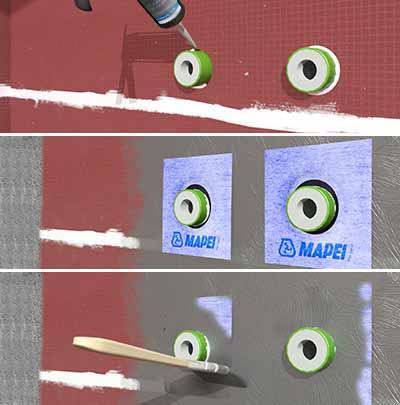
Tiling
You can begin tiling once the Mapegum WPS waterproofing has dried. The drying will usually take 2–24 hours depending on the used products, the thickness of the layers, temperature, and the relative humidity of the air. It is important to wipe the surfaces of the panels clean from dust and dirt with a moist cloth. Before you begin the installation, use a wet sponge to thoroughly moisten the surface of the wall. Tiles are fixed in place using Keraflex Maxi S1 mortar. The tiles are grouted using either the Keracolor FF or Ultracolor Plus sealing grout, and the corners are filled in with Mapesil AC or Mapesil LM sanitary silicone.